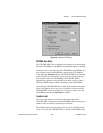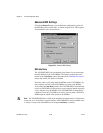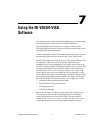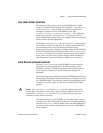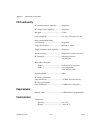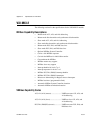
Chapter 7 Using the NI-VXI/NI-VISA Software
© National Instruments Corporation 7-3 PCI-MXI-2 for Linux
Low-Level Access Functions
The memory windows used to access the VXI/VMEbus are a limited
resource. You should follow the protocol of calling the
viMapAddress()
or
MapVXIAddress() function with Access Only mode first before
attempting to perform low-level VXI/VMEbus access with
viPeekX()/viPokeX() or VXIpeek()/VXIpoke(). Your application
should always call the
viUnmapAddress() or UnMapVXIAddress()
function immediately after the accesses are complete so that you free up the
memory window for other applications.
The functions
viMapAddress() and MapVXIAddress() return a pointer
for use with low-level access functions. It is strongly recommended that
you use the functions to access the memory instead of directly
dereferencing the pointer. Using these functions makes the NI-VXI/VISA
software more portable between platforms. Refer to the Compiling Your C
Program for NI-VXI/NI-VISA section for more information on portability
issues, and to your NI-VXI or NI-VISA software reference manual for
more information on low-level VXIbus or VMEbus access functions.
Local Resource Access Functions
By using vxiedit, you can set up the PCI-MXI-2 to share either the
system memory on the motherboard or the onboard memory on the
PCI-MXI-2 with the VXI/VME system. Refer to the NI-VXI Graphical
Utilities Reference Manual for more information on setting these
parameters.
Notice that sharing the system memory with the VXI/VME system does not
mean that the entire range of shared system memory is available to be used
for VXI/VME transfers. You need to be cautious in specifying the portion
of memory you want to share, as some areas are already used for other
purposes.
Caution Use viMemAlloc() or VXImemAlloc() to allocate a buffer in the system
memory that is reserved for your use only. Using any range of addresses that was not
returned from
viMemAlloc() or VXImemAlloc() to receive data may cause your
computer to crash or behave incorrectly.
The onboard memory on your PCI-MXI-2, on the other hand, is entirely
available to you. You can obtain the VXI address of your onboard memory
using the
GetDevInfo() function. When you have the VXI/VME address,
you can access that memory using high-level or low-level VXI/VMEbus
access functions.




